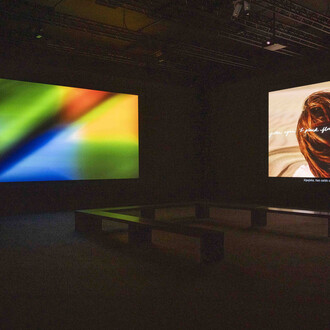In 1906, Hilma af Klint (b. Stockholm 1862; d. 1944) embarked upon the most ambitious, ground-breaking project of her career, the Paintings for the Temple. Over nearly a decade, she created 193 paintings and drawings, many of which were like little that came before. Bold, colorful, and often untethered from references to the visible world, these works explore forces and structures that af Klint believed were hidden to the eyes.
In making these works, af Klint set aside the conventions of the Swedish academic tradition, and instead looked to the scientific and the spiritual currents of her day. Incorporating ideas and imagery from these two areas, while forging her own unique artistic vocabulary, af Klint established herself a pioneer in representing the invisible.
As af Klint made her way as an artist, she was living through profound social changes, including women’s rights movements. Despite the limitations placed on women during the late 19th and early 20th centuries, af Klint was able to study at Royal Academy of Fine Arts and went on to exhibit her more traditional figurative works, but she also had to struggle to devote herself freely to art. In a context where women artists were commonly thought to be capable only of copying, not innovating, she rarely presented her more radical, abstract art publicly and struggled to find an audience who appreciated it.
Undeterred, she painstakingly edited, saved, and catalogued her work so it would be preserved for future audiences, and stipulated that it not be exhibited until two decades after her death, when she believed the world would finally be ready to understand what she had produced. Ultimately, it would take even longer. Although her art was finally shown in 1986, forty-two years after her death, it would take decades more before her extraordinary legacy finally earned the recognition it deserves.













